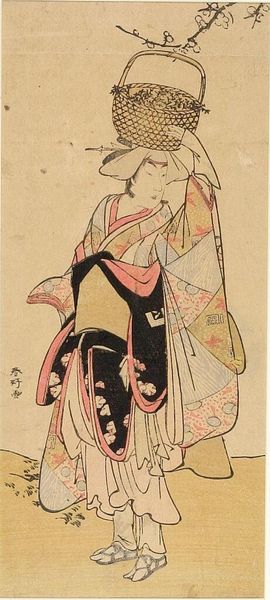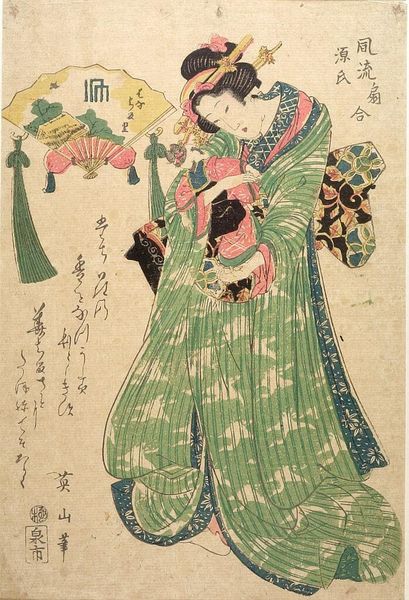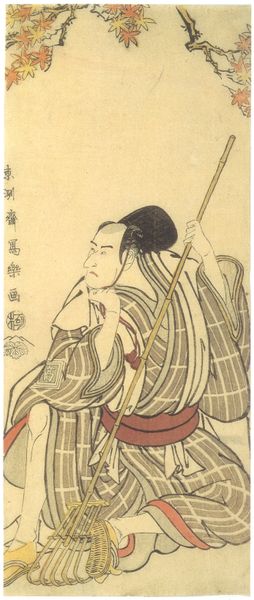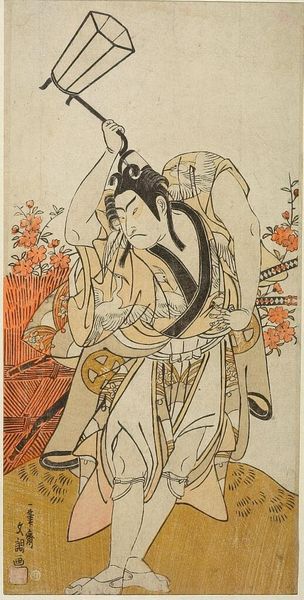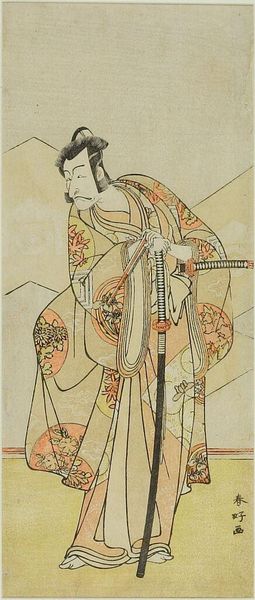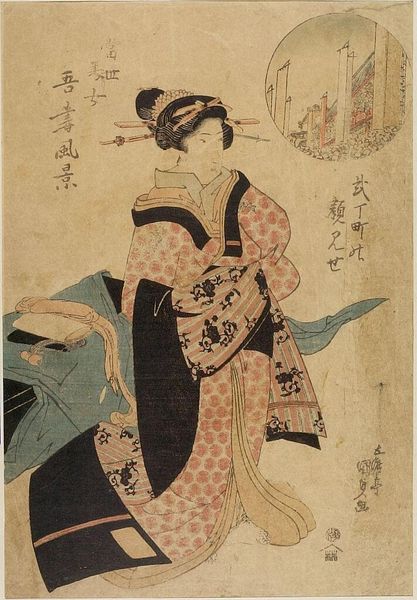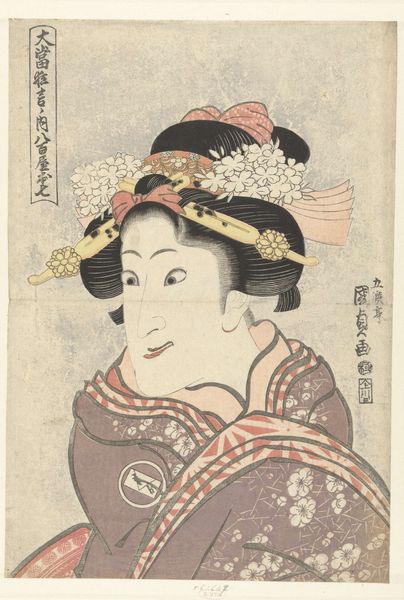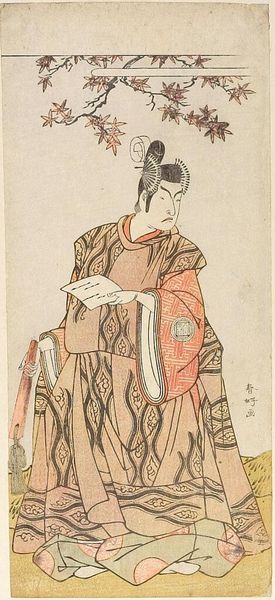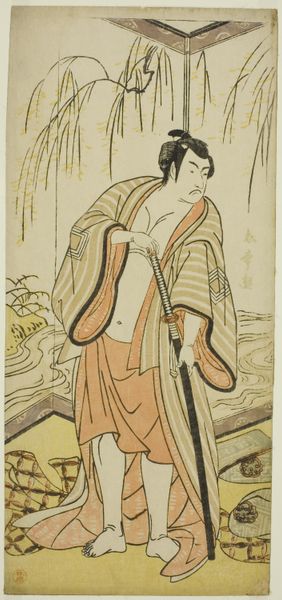
Dimensions: Paper: H. 28.2 cm x W. 20.3 cm (11 1/8 x 8 in.)
Copyright: CC0 1.0
Curator: I’m struck by the quiet dignity of this print, *Azuma Togo*, by Ippitsusai Bunchō. Editor: It’s captivating. The linework is so delicate, almost fragile. You can really see the texture of the paper. Curator: Indeed. Bunchō, who died quite young, captured a certain elegance that spoke to the fashionable tastes of his time, likely circulating within exclusive social circles. Editor: The subject's kimono, with its intricate designs, reflects a sophisticated printmaking and textile industry of the Edo period. The materiality speaks to a culture valuing refinement and craftsmanship. Curator: Absolutely. And the fan shape framing her hints at the theatrical world that influenced ukiyo-e artists like Bunchō, catering to a burgeoning consumer culture interested in celebrity. Editor: Yes, thinking about the consumption of this piece is interesting. It was produced using woodblock prints, meaning potentially hundreds of these were produced, all by hand. Curator: Considering its placement within the Harvard Art Museums, we see how tastes evolve and how the value and interpretation of art changes across centuries. Editor: It prompts us to consider the labor involved in creating this object and how its inherent worth transcends its original monetary value. Curator: A worthy reflection on the enduring power of art. Editor: Precisely. A reminder to appreciate the process as much as the final product.
Comments
No comments
Be the first to comment and join the conversation on the ultimate creative platform.
